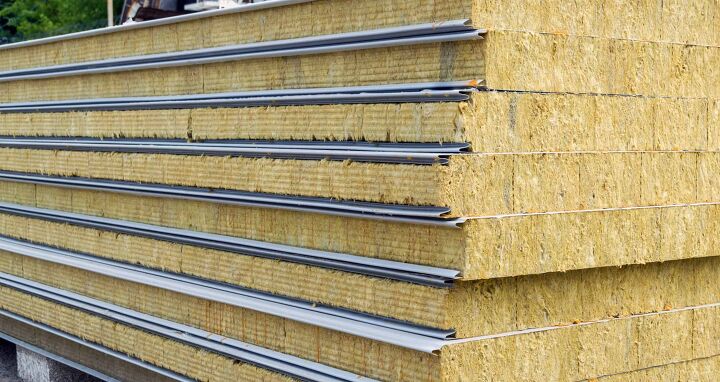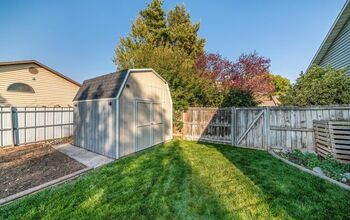How Long Do SIP Panels Last? (Here Are the Details)

SIP panels are modern, eco-friendly building panels that are quickly becoming popular with home builders. SIPs, or Structurally Insulated Panels, are load-bearing panels that can be used to efficiently build a home. They can be used instead of a traditional house framing.
If they are properly installed and maintained, SIP panels can last 60 years or more. They hold up as well as other, more traditional building materials. As with all homes, SIP panel homes are only as good as the conditions they are subjected to.
In this article, we will cover all aspects of SIPs and their uses in modern home construction. If you are trying to decide whether or not to use SIPs for your home, this is a great first step. By having this knowledge, you can make the most informed decision.
SIP Panel Usage
SIPs can be used to construct walls, floors, and ceilings. Their solid makeup makes them perfect for replacing framing and insulation. They are designed to be used for all kinds of applications and are incredibly versatile.
If you are looking to construct a home entirely out of SIPs, it is possible. However, you should know that SIPs alone can not be used for building the structure. They are not nearly as weatherproof or durable as the traditional lumber materials.
Because of this, SIPs must be finished with any number of finishing materials. Shingles, stucco, and other types of finishes can be used to protect the SIPs. It is important that you check your local building codes for information regarding SIP structures.
What Are Sip Panels Made of?
SIPs are typically made of an insulated core of foam sandwiched between two pieces of Oriented Strand Board, or OSB. Because of this, they can replace the traditional insulation that usually fills the framing of your house.
One of the benefits of how SIPs are made is that they can be designed in the factory for your home. They can be cut and built to your specific requirements. This makes them both labor and time-saving in the long run.
This customization is especially important if you are building your own home. Things like custom roofs and windows can be integrated into the actual structure of the house. This is valuable for architecture that is both traditional and a little more out there.
Are SIP Panels Waterproof?
SIPs themselves are not waterproof. The insulating material is usually sensitive to moisture and would deteriorate very quickly were it to get too wet. Because of this, you are going to have to cover your SIPs with some sort of finishing material.
Your external finishing material must be some kind of shingling or siding. Common types of siding are steel, vinyl and brick. This is a great feature since it means you can change the exterior look of your home with relative ease.
It is important to note that all SIP panel finishing material must have an underlayment of some kind. This underlayment will help seal the house and give water a way to drain. Without it, moisture will seep into the SIPs and cause damage.
Are SIP Panels Fire Resistant?
While SIPs are made of materials that are combustible, they can be used in fire-rated structures. This means that they are not any more combustible than a traditionally framed home. In fact, the fact that they are compacted may even be a benefit.
SIPs may be used in fire-rated structures if they have passed what is called the one-hour fire test. This means that the material is able to withstand the heat of a furnace for one hour. This is an important rating for all kinds of building materials.
In order to pass the one-hour fire test, most SIPs need a layer of gypsum. Gypsum is a soft mineral that helps keep the core from melting. Since the core of most SIPs is made of foam, this is a common occurrence that must be planned for.
SIP Panel Ecological Benefits
There are numerous environmental benefits to using SIP panels instead of framing and insulation. These benefits are both monetary and ecological making SIPs a great option for the green-minded.
SIPs are the most airtight building material that you can use to build a home. They offer a tight seal that keeps heat inside the house and offers exceptional insulation. This is crucial for keeping your heating costs low and your energy use efficient.
SIP panels also use renewable materials for their construction. This makes them an excellent choice if you are concerned about deforestation. Framing and insulation tend to use quite a bit of lumber which can be a drain on the environment.
Downsides of SIP Panels
While SIPs can be a good choice for building your home, they are not without their downsides. Knowing what they are can help you make an informed decision. If you are considering using SIPs, it is a good idea to consider these downsides as well.
SIP panels, while efficient, are not very resistant to pests or moisture. Because of this, you may want to think about the kind of climate you are building in. If it is a place that has a lot of humidity and termites, SIPs may not be the best choice.
SIP panels are also notoriously difficult to wire. Whereas traditional framing has lots of open space for electrical wiring, SIPs require a great deal of planning. This means that your electrical system must be meticulously laid out before beginning construction.
Are SIP Panels Expensive?
The price of SIPs varies depending on the manufacturer and where you are located. As with any building materials, the price will vary with the market. This means that you should check with your local manufacturer for specific pricing.
SIP panels do tend to be more expensive than your traditional materials like lumber and insulation. They require quite a bit more processing and generally have a higher price tag. The customizations that are possible also add another level of expense.
However, with SIP panels, you do not have to pay for as much labor. It is much easier to erect a structure made entirely out of SIPs than it is to frame one up and fill it with insulation. Because of this, you will be saving on labor in the long run which could even out the cost.
Related Questions
What is the healthiest insulation?
Up until recently, fiberglass was the most popular material for insulation. While this material is effective, it has to be treated, usually with formaldehyde. Now, though, many homes are insulated with organic materials like wool or cotton.
Do SIPs need an air barrier?
SIPs that are properly installed do not need an air or vapor barrier. This is because if they are manufactured and installed correctly, the SIPs already have a built-in barrier. This is one of the many reasons why they are so cost and labor effective.
What is the cheapest wall to build?
The least expensive building material that is readily available is treated pine. It is entirely possible to build a wall with this lumber, however it is not going to last very long at all. You should expect to rebuild any pine wall within 5 to 10 years.

I am a writer and editor from The Bay Area, CA. When I'm not typing, I enjoy hiking, woodworking and gardening. I love sharing tips and discovering new trends in home improvement.
More by Michael Oconnor













![Finishing Basement Without Permit [Is It Really Illegal?]](https://cdn-fastly.upgradedhome.com/media/2023/07/31/9070078/finishing-basement-without-permit-is-it-really-illegal.jpg?size=350x220)












![12 Washing Machine Brands to Avoid [with Recall Data]](https://cdn-fastly.upgradedhome.com/media/2023/07/31/9075781/12-washing-machine-brands-to-avoid-with-recall-data.jpg?size=350x220)
